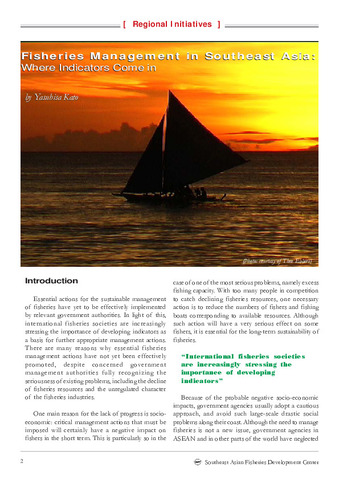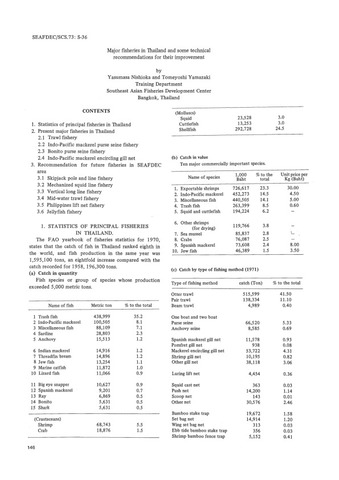Fisheries management in Southeast Asia: Where indicators come in
Share
Abstract
This article is broadly based on the Second Regional Technical Consultation on the Use of Indicators for the Sustainable Development and Management of Capture Fisheries organized by SEAFDEC (Southeast Asian Fisheries Development Center) in Kuala Lumpur, 9-11 March 2004. The objectives of the meeting were to review the progress of case studies using indicators in selected ASEAN Member Countries, and to discuss how to further promote their use as a basis for establishing an appropriate fisheries management framework in Southeast Asia. The outcomes of the discussion which took place in the meeting are summarized and the main issues are elaborated upon.
Suggested Citation
Yasuhisa, K. (2004). Fisheries management in Southeast Asia: Where indicators come in. Fish for the People , 2(1), 2-7. http://hdl.handle.net/20.500.12066/680
Subject
Collections
Related items
Showing items related by title, author, creator and subject.
-
The Status of Fisheries in the Republic of Maldives
Faiz, Mohamed (Training Department, Southeast Asian Fisheries Development Center, 1997)The paper discusses the tuna fisheries in Maldives which dominates its fishing industry. Apart from a very strong domestic market, tuna is also the main export commodity of the country. Moreover, reef fisheries such as, ... -
Major fisheries in Thailand and some technical recommendations for their improvement
Nishioka, Yasumasa; Yamazaki, Tomeyoshi (Japan International Cooperation Agency, 1977)Presented in this paper is the development of fisheries industry in Thailand. The data on the production of the principal fisheries species and major fishing methods are also presented. Also included are the recommendations ... -
Status of Fishing Conditions in Cambodia
Sour, Kim; Vuthy, Ros (Training Department, Southeast Asian Fisheries Development Center, 1997)Fisheries in plays a very important role in Cambodia’s national economic development. Total fish catch production in 1996 was 104 310 tones, about which 60% was contributed by inland capture fisheries, 30% by marine capture ...





